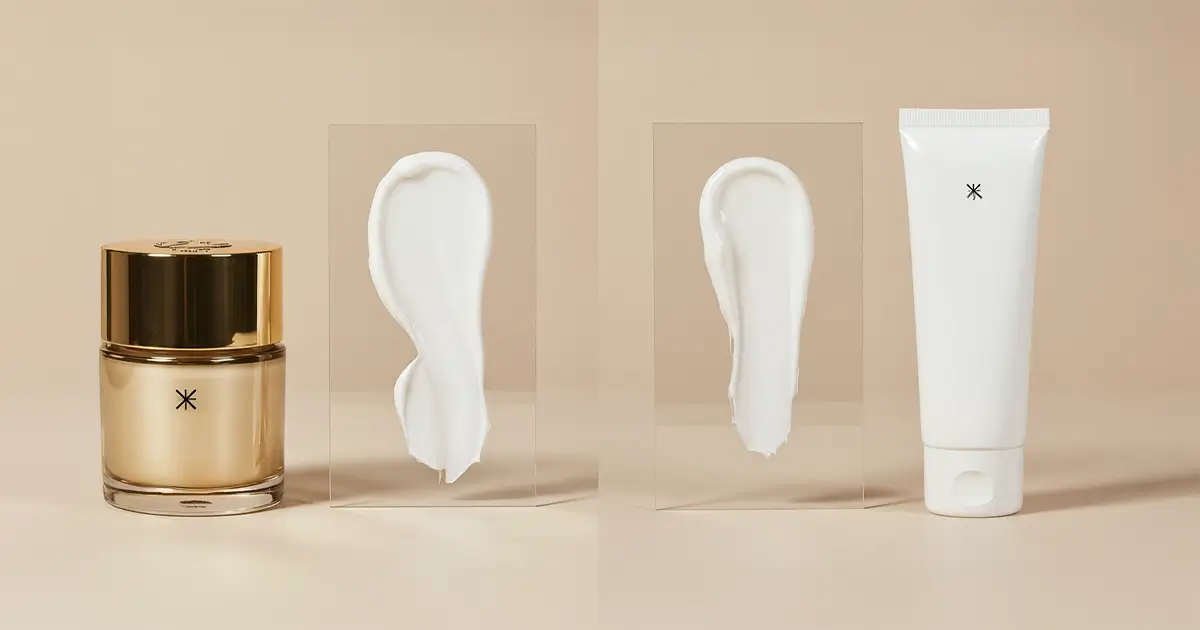Ever wondered if the breathtaking price tag on that glossy bottle is justified, or simply a flex for your bathroom shelf? I will peel back the layers of cost, formulation, and hype, weaving in research and real life testing so you can shop confidently. Expect buzzwords like expensive skincare, price versus performance, and budget friendly products to pop up naturally, and allow about an 11 minute read.
The Psychology of the Price Tag
Price plays with the mind long before a formula touches the face. Behavioral economists have shown that higher prices can create a placebo effect, making us perceive a cream as silkier or a serum as more potent even when blinded testers cannot tell the difference. I fell for it too when I convinced myself a gold capped toner was transformative, only to admit a week later that my skin felt identical to how it did with a pharmacy brand.
Why does this happen? Humans read price as a shortcut for quality because comparing ingredient lists line by line is hard work. A 2024 review from the London School of Economics linked premium pricing to what researchers call "effort avoidance," meaning we happily outsource the homework to the retailer and pay for the privilege read the paper. Marketers know this, dressing products in shiny jars that look like modern jewelry boxes because they understand our brains love shortcuts more than spreadsheets.
I still believe nice packaging has a place, especially when it protects unstable actives from light and air, yet there is a line where design costs more than the peptides inside. When you spot flamboyant acrylic lids and magnetic closures, pause and ask whether those euros are funding your glow or the company's Instagram aesthetic.
Ingredient Quality: Splurge or Save?
Let us zoom into the stuff that actually touches your skin. Not all hyaluronic acid is the same molecular weight, and not all vitamin C derivatives stay potent past six weeks. However, raw material price does not always correlate with final retail cost. For example, pure niacinamide powder sits at around two dollars per hundred grams, so a forty five dollar "luxe" booster with exactly four percent niacinamide feels rather cheeky.
On the flip side, stabilized ascorbic acid derivatives such as 3 O ethyl ascorbic acid can cost formulators up to twenty times more than plain L ascorbic. That additional lab bill can show up in the shelf price, and in this case the mark up makes sense because the molecule resists oxidation longer. One study by Seoul National University found that the derivative kept over eighty percent activity after eight weeks at room temperature, while standard L ascorbic dropped below fifty percent in the same period.
Here is a quick cheat sheet of actives worth a strategic splurge:
- Micro encapsulated retinaldehyde for gentle collagen stimulation.
- Peptide complexes with proven in vivo data such as Matrixyl 3000.
- Broad spectrum UVA filters approved in the EU but not yet common in drugstore lines.
Behind the Lab Costs
Stability testing, microbiological challenge tests, and clinical trials add zero glamour to a product photo yet eat a lion's share of the budget. Indie formulators sometimes skip these steps to keep prices low. That is not always dangerous, but it means shelf life might drop from thirty six months to twelve and efficacy claims can wobble.
When a brand publishes a full test protocol with sample size and methodology, the transparency signals that your cash is paying for science, not solely influencer trips to Mykonos. I keep a folder of such reports because reading them feels like skincare detective work.
Formulation Synergy and Texture
Ask any chemist: a serum is more than its hero ingredient. The supporting cast of solvents, pH adjusters, and texture enhancers decides whether that hero actually penetrates the stratum corneum or sits on top doing nothing. A budget lotion might list the same percentage of ceramides as a prestige one, yet if the emulsifier system is flimsy the lipids separate within weeks.
Texture matters. Consumers reject gritty sunscreens, so formulators of expensive SPFs often invest in micronized zinc particles and silicone elastomers that glide like melted ice cream. A 2023 paper from Harvard's Cosmetic Science Program showed that pleasant skin feel doubled daily compliance compared to chalky formulas, ultimately leading to better photoprotection.
Still, some affordable brands have mastered sensorial elegance by partnering with large contract manufacturers who work at scale. Their secret is volume: selling millions of units offsets the cost of fancy rheology modifiers, allowing them to keep the sticker price friendly. I cheer when this happens because good skin health should not require a second mortgage.
Packaging and Sustainability
Glass pumps look gorgeous, yet they increase transport weight which bumps up carbon emissions and shipping fees that sneak onto the final price. Refillable pouches or lightweight aluminum tubes can cut costs without sacrificing formula integrity. If a brand offers a refill program at a lower price per milliliter, your wallet and the planet both exhale happily.
I weigh packaging not just by looks but by recyclability in my local municipal system. Hard to separate composite plastics may drive costs down in the factory yet raise environmental bills for society later.
Hidden Costs in Distribution
Once a product leaves the factory, each stop along the supply chain inflates its price. Distributors, retailers, and local taxes each add a margin. A serum that started life at ten euros ex factory can reach seventy euros by the time it sits on a boutique shelf in Paris.
E commerce sometimes trims these add ons, yet free shipping is never truly free. Brands bake courier fees into the sticker price. During a webinar a logistics manager admitted that every "complimentary express delivery" line you read is financed by a two to five percent increase in retail price.
Trademark and Celebrity Fees
Licensing a celebrity name can cost more than securing a patent for a novel molecule. Those fees spread across product units just like raw material costs. If your favorite singer's face is on the box, you are paying a slice of their mansion's mortgage.
This does not make celebrity lines evil, but it should remind us to judge them by the lab work behind the scenes, not by the concert tour worth of glamour up front. I once joked on Instagram that if my cats ever launched a serum, the price would triple purely to fund their treat addiction.
Budget Wins You Should Celebrate
A good cleanser rarely needs luxury bells. Its job lasts sixty seconds, so the surfactant blend and pH matter more than scented petals floating inside the bottle. Generic sodium cocoyl isethionate can be exquisitely gentle when buffered with glycerin, and that combo pops up in many eight dollar face washes.
Drugstore moisturizers often share laboratories with prestige sister brands under the same conglomerate umbrella. When I toured a French plant last year, I watched identical emulsion bases squirt into different colored jars. The chemist whispered that the pricier version justified itself only through marketing budgets and a faint rose fragrance.
Even active treatments can come cheap. Adapalene, a next generation retinoid, now sits on American shelves for under fifteen dollars after patent expiration. Dermatologists rave about its acne clearing power, proving cost and potency can coexist beautifully.
How to Read the Label Like a Pro
Start with the INCI list. Ingredients appear in descending order by weight until the one percent mark. Spot beloved actives high on the list instead of hovering near preservatives at the end.
Look for pH clues. Alpha hydroxy acids need a sweet spot around 3.5 to exfoliate properly. Brands that disclose pH save you from guessing. I teach friends to google "hyaluronic acid layering plus brand name plus pH" for a quick dossier before purchasing.
Lastly, note packaging compatibility. Air sensitive probiotics in a clear jar scream trouble. An opaque airless pump shows someone in the lab cared about preservation.
When Splurging Makes Sense
There are moments when spending extra feels wise. Complex actives for specific concerns like melasma, rosacea, or photo aging often benefit from advanced delivery systems such as liposomes or nanoparticles. Crafting these carriers demands expensive equipment that small laboratories may not own.
Time can be worth money too. A dermatologist tested all in one night cream may save steps in a hectic routine, and that convenience carries a price tag. If the alternative is buying three separate serums and layering them with questionable compatibility, the single multitasker may even save cash over time.
Pro tip: Buy mini sizes before committing. Most prestige lines sell travel kits during holiday season. That lowers risk, and the tiny bottles look cute beside your toothbrush. My cousin joked that the minis look like sample shampoos for dolls, which makes me laugh each time I unpack them.
Case Study: My Luxury Sunscreen Experiment
I once wore a sixty dollar Japanese sunscreen on the left side of my face and a twelve dollar European drugstore SPF on the right for two weeks. I measured hydration with a corneometer and noted no statistical difference. However, I reached for the luxe one more often because it felt feather light under makeup, so my reapplication frequency doubled. In the end the pricier formula delivered better real world protection, proving that behavioral factors can tilt the value equation.
This does not mean you must splurge. It does suggest aligning investment with preferences that influence usage habits.
FAQ
Is there a price point that guarantees quality?
No single threshold ensures excellence. Evaluate ingredient list, packaging, and independent test data instead of relying on cost alone.
Do celebrities use ultra luxury skincare or is it marketing?
Many receive free product bundles. Their bathrooms may feature four digit jars, yet off camera dermatologists often prescribe pharmacy staples like plain petrolatum.
Can I mix drugstore and high end products safely?
Yes. Focus on compatibility of pH and active strength, not brand tier. Pairing a budget ceramide cream with an upscale peptide serum is sensible.
How do I spot overpriced dupes that offer nothing new?
Compare concentration of actives per milliliter. If two serums share identical percentages yet differ wildly in price, branding may be the only distinction.
Is it worth paying more for fragrance free versions?
If you are sensitive, yes. Fragrance allergens can trigger dermatitis. Fragrance free lines sometimes cost more due to stricter contamination controls during manufacturing.
What is the first product type where I should invest?
Sunscreen. Daily protection underpins every other treatment. A formula you love enough to reapply is priceless.
Conclusion
Expensive does not automatically equal effective, yet strategic spending on advanced actives, robust packaging, and clinical testing can return genuine skin benefits. Balancing published research with personal preference keeps both face and finances content.
Tell me about your best bargain find or most regrettable splurge in the comments. See you in the next post - until then, take good care of your skin!


Comments (0)
No comments yet - be the first to share your thoughts!
Leave a Reply
Your email address will not be published. Required fields are marked *